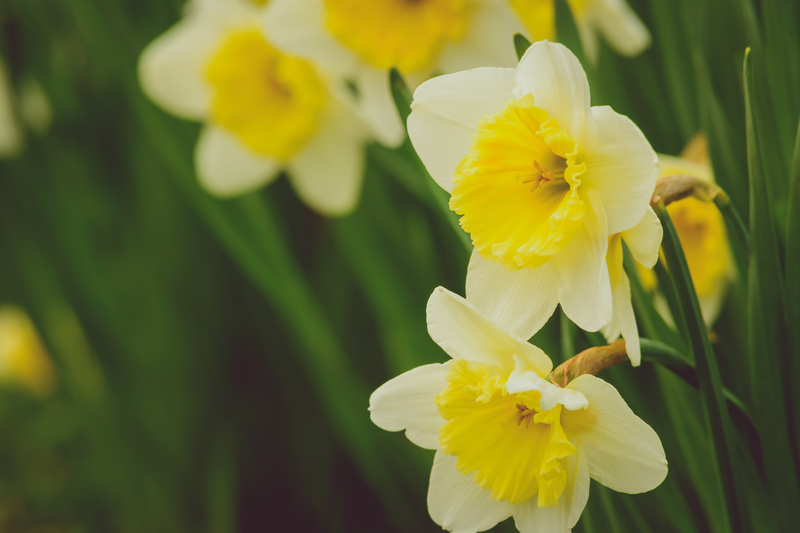Transform Your Outdoors: Hedge Trimming Techniques
Posted on 18/08/2025
Transform Your Outdoors: Hedge Trimming Techniques
Are you looking to enhance your home's curb appeal, create stunning garden borders, or simply maintain a healthy, vibrant yard? Mastering hedge trimming techniques is an essential skill for any outdoor enthusiast or homeowner. Whether you are a seasoned gardener or a beginner, learning how to properly trim and shape your hedges can dramatically transform your outdoor spaces. This comprehensive guide will delve deep into hedge maintenance, covering everything from choosing the right tools to advanced pruning methods, ensuring you have the knowledge needed to cultivate beautiful and healthy hedges.
Why Hedge Trimming Matters
Before exploring specific hedge trimming techniques, it is important to understand why regular maintenance is crucial. Well-manicured hedges do more than just enhance the appearance of your garden. Here's why you should prioritize hedge care:
- Aesthetic Appeal: Nicely shaped hedges can act as natural fences, frame pathways, and create stunning outdoor designs.
- Healthier Plants: Trimming removes damaged or diseased branches, encouraging new growth and reducing the risk of disease.
- Increased Privacy: Properly maintained hedges can form dense screens, shielding your home from outside view.
- Wildlife Habitat: Many birds and beneficial insects use hedges for shelter and nesting.
- Property Value: An attractive, well-kept landscape can significantly increase your property's value.

Types of Hedges and Their Trimming Needs
Different hedge types require unique care strategies. Understanding these will help you tailor your hedge pruning techniques for optimal results:
1. Formal Hedges
Formal hedges are maintained in strict, geometric shapes. These require regular, precise trimming to preserve their aesthetic and structure. Common formal hedge plants include:
- Boxwood (Buxus sempervirens)
- Yew (Taxus baccata)
- Privet (Ligustrum species)
2. Informal Hedges
Informal hedges showcase a more natural, flowing appearance. They need less frequent trimming and respond well to selective pruning to encourage flowering and fruit production. Popular informal hedges include:
- Forsythia
- Hydrangea
- Lilac
Essential Tools for Hedge Trimming
Choosing the right equipment can make all the difference when it comes to effective hedge maintenance. The following tools are must-haves for achieving professional results:
- Hand Shears: Ideal for precision trimming and fine detail work on soft or small-leaved hedges.
- Hedge Trimmers: Electric or gas trimmers are suitable for rapid shaping of large, dense hedges.
- Loppers: Designed for cutting thicker branches within the hedge that manual shears can't handle.
- Pruning Saw: Best for dealing with mature or overgrown woody stems.
- Protective Gear: Safety goggles, gloves, and in some cases, ear protection when using powered trimmers.
Invest in quality tools and keep blades sharp for clean, precise cuts. Dull blades can tear branches, making the plant susceptible to disease and slow healing.
The Best Time to Trim Hedges
Timing is crucial for minimizing stress and maximizing the health of your plants. The ideal trimming schedule depends on the species and desired shape:
- Evergreen Hedges: Trim late spring or early summer, after new growth appears and before flowering (if applicable).
- Deciduous Hedges: Best trimmed while dormant in late winter or early spring, before buds break.
- Flowering Hedges: Prune immediately after blooming to avoid removing the current season's flowers.
Remember: Avoid trimming on excessively hot, cold, or dry days, as extreme temperatures can stress hedges and hinder recovery.
Step-by-Step Hedge Trimming Techniques
Proper technique is key to achieving healthy, visually appealing hedges. Follow these systematic steps to transform your outdoors:
1. Plan Your Shape
- Formal Hedge Trimming: Decide on the shape - typically square, rectangular, or spherical. Use string lines or stakes as guides for straight lines.
- Informal Hedge Pruning: Assess natural growth and focus on removing stray or overcrowded branches.
2. Remove Dead or Diseased Wood
Start by inspecting your hedge carefully. Cut away any dead, damaged, or diseased stems using loppers or a pruning saw. This allows for better airflow and reduces the spread of pathogens.
3. Shape the Sides First
When shaping a hedge, always begin with the sides before moving to the top. This prevents trimmings from marring an already-finished top surface. Trim from the bottom up, slightly angling the sides (wider at the base, narrower at the top). This ensures:
- Even sunlight penetration for lower branches
- Prevention of leggy growth at the base
4. Trim the Top Last
Use a guiding line or platform to maintain a level top. For sloped properties, consider an even top in relation to the ground (sometimes a sloped top looks more uniform relative to your surroundings).
5. Refine and Clean Up
After trimming, stand back and check for any imperfections or missed spots. Snip away minor protrusions with hand shears for a polished look. Remove cuttings from the hedge's base to discourage pests and diseases.
Advanced Hedge Pruning Techniques
Once you have mastered the basics, enhance your garden's appeal with these advanced hedge shaping techniques:
Espalier
Originating in Europe, espalier involves training hedges, typically fruiting species, against a wall or support into intricate, flat patterns. This technique adds a formal, sculpted elegance to any space, maximizes sun exposure, and makes harvesting easier.
Topiary
For the artistic gardener, topiary transforms hedges into whimsical shapes or animal figures. Begin with dense, small-leaved species like boxwood or yew, and trim gradually over time with hand shears for fine detail. Patience and vision bring topiary hedges to life.
Rejuvenation Pruning
If you inherit an overgrown or neglected hedge, don't lose hope! Rejuvenation pruning involves cutting the hedge back drastically (often to about 6-12 inches from the ground) during the dormant period. This stimulates strong, healthy new shoots and gradually restores the hedge's form.
Common Hedge Trimming Mistakes (and How to Avoid Them)
Successful outdoor hedge trimming means sidestepping typical pitfalls, such as:
- Cutting Too Late in the Season: Late shearing stimulates tender new growth prone to winter damage.
- Making Hedges Top-Heavy: Wider tops shade out lower branches, causing the base to thin and lose shape.
- Using Dull Tools: Results in ragged cuts, promoting disease entry and unsightly regrowth.
- Ignoring the Natural Form: Over-pruning or shaping outside the hedge's growth habits can stress and stunt the plant.
Eco-Friendly Hedge Maintenance Tips
Embrace sustainable practices as you care for your outdoor spaces:
- Compost Clippings: Use hedge trimmings as mulch or add to your compost pile to enrich your soil.
- Limit Chemical Use: Choose organic fertilizers and natural pest control methods to protect pollinators and beneficial wildlife.
- Conserve Water: Mulch around the hedge base to retain moisture and reduce water needs.
- Preserve Wildlife: Check for nests before trimming during bird breeding season.
Frequently Asked Questions About Hedge Trimming Techniques
How often should I trim my hedges?
Frequency depends on species and preference. Formal hedges may need trimming 2-3 times per year, while informal types may only need shaping annually. Fast-growing species often require more frequent attention.
Can I trim hedges in autumn or winter?
It's best to avoid heavy trimming in late autumn, as new growth may not harden off before frosts. Light maintenance (removing stray branches) can be done in mild winters, but major work should be reserved for late winter or early spring.
What's the difference between trimming and pruning?
Trimming shapes the plant and removes overgrowth, while pruning focuses on removing dead or diseased wood to promote health.
Tips for Maintaining Perfect Hedges Year-Round
- Inspect regularly: Walk your property monthly to check for disease, pests, or nutrient deficiencies.
- Feed adequately: Fertilize with a balanced mix in spring and, if necessary, mid-summer for lush growth.
- Mulch generously: Retain soil moisture and deter weeds by applying mulch 2-3 inches deep at the hedge base.
- Water deeply: During dry spells, provide thorough irrigation, especially for new or established flowering hedges.
- Rotate trimming patterns: Change where you start trimming each time to avoid uneven wear.

Choosing the Right Hedge Plants for Easy Maintenance
Some species are easier to maintain than others. If starting anew, consider these low-maintenance, versatile hedge plants:
- Boxwood: Classic choice for formal designs, responds well to frequent trimming.
- Photinia: Attractive red new growth, tolerates regular shaping.
- Laurel: Broad-leaved, dense, and quick-growing (needs periodic thinning).
- Holly: Glossy leaves, slow growth, requires less frequent shearing.
Conclusion: Bring Your Outdoors to Life with Expert Hedge Trimming
Learning and applying the correct hedge trimming techniques can truly transform your outdoors. Whether your goal is a manicured formal hedge, a lush privacy screen, or a living sculpture, regular care and attention will reward you with stunning, healthy shrubs year after year. With the strategies above, you'll not only create a neater and more inviting garden, but you'll also improve the long-term health and vigor of your landscape.
Grab your shears, plan your shape, and start trimming--your dream outdoor oasis awaits!
Transform Your Outdoors Today!
Master these hedge cutting techniques and watch your property's beauty and value bloom. For more landscaping tips and expert advice, keep exploring our gardening resources!

